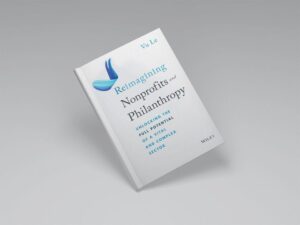March 3, 2015; Washington Post
As readers may remember, there have been a few occasions over the past year or so when a board has declared an institution dead only to see the constituency beg to disagree. The San Diego Opera, as reported here, in fact, has some eerie similarities to this story about Sweet Briar College.
Early this week, Sweet Briar College, still with a relatively healthy $84 million endowment, announced it would close down at the end of August, citing “insurmountable financial challenges.” Over the past fifty years, the number of women’s colleges in the United States has plummeted from 230 to little more than 40. Some of the remaining institutions appear to be thriving, but some see the field as dying overall.
Sweet Briar has been trying to cut expenses and sharpen its focus, but its enrollment was on the decline. In the four years between 2010 and 2014, its student body had shrunk from 760 students to 700, and it had begun to discount its tuition by an average of about 60 percent. All of these factors were seen as a kind of slow death spiral, and on Saturday, February 28th, the board of directors voted unanimously to close as of the end of August.
“This is a sad day for the entire Sweet Briar College community,” Paul G. Rice, the board chairman, said in a statement. “The board closely examined the college’s financial situation and weighed it against our obligations to current and prospective students, parents, faculty and staff, alumnae, donors and friends. We voted to act now to cease academic operations responsibly, allowing us to place students at other academic institutions, to assist faculty and staff with the transition and to conduct a more orderly winding down of academic operations.”
Sign up for our free newsletters
Subscribe to NPQ's newsletters to have our top stories delivered directly to your inbox.
By signing up, you agree to our privacy policy and terms of use, and to receive messages from NPQ and our partners.
But some believe that the board acted precipitously and without much imagination, and they are looking for alternatives. They have erected a website that is dedicated to a “community effort to reclaim our college after the abrupt announcement of the school’s closure.” Members of the community are asked to raise money and share their stories with friends and on social media using #SaveSweetBriar and #ThinkIsForGirls.
“We have come together to not only raise funds but also encourage additional conversation about the value of on-campus education, the importance of women’s colleges in America, and the reality that all small, liberal arts colleges face in the current climate of higher education,” reads the introductory blog post on the website which has already raised $1.08 million of a $20 million goal.
Again, this lack of alignment between the board and its stakeholders may be a good indicator of where unseen opportunities may have lain and where the basis of a recovery might be possible. We’ll keep an eye on the Sweet Briar situation for sure, but also on this larger trend of the disconnect between some boards and their stakeholder groups.—Ruth McCambridge











